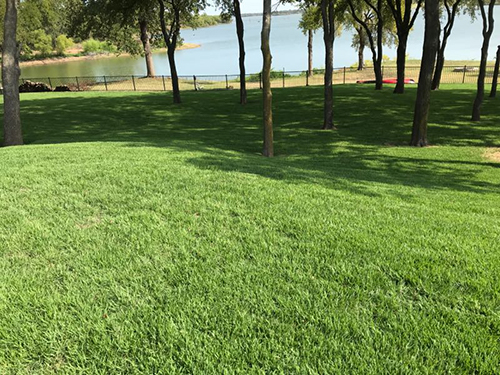You just invested in a beautiful new lawn, and now—ugh—yellow patches are creeping in. Don’t panic! While yellowing sod can be alarming, it’s often fixable if you act quickly. Let’s break down why this happens and how to revive your grass before it’s too late.
Is It Normal for New Sod to Be Yellow?
A little yellowing at the edges or seams is common in the first 3–7 days after installation—this is just transplant shock. But if large areas turn yellow or the sod isn’t greening up after a week, you likely have one of these issues:
✔ Underwatering – Sod needs constant moisture to establish roots.
✔ Overwatering – Soggy soil suffocates roots (more on this below).
✔ Poor soil contact – Air gaps under sod dry out roots.
✔ Fertilizer burn – Too much nitrogen can scorch tender new grass.
For a healthy start, follow these new sod watering tips to avoid common mistakes.
How to Green Up Yellow Sod
1. Check Your Watering (The #1 Cause!)
-
Underwatered? Sod should stay consistently damp (not pooled) for 2+ weeks. Lift a corner—if the soil underneath is dry, water more.
-
Overwatered? Squishy soil or a rotten smell means cut back. Let it dry slightly between waterings.
2. Stomp Down Loose Sections
Walk over yellow areas to press roots into the soil. Air pockets prevent hydration.
3. Apply Half-Strength Fertilizer
Use a balanced (10-10-10) fertilizer at half dose to give nutrients without burning.
4. Wait Before Mowing
Don’t mow until sod is firmly rooted (about 2–3 weeks). Tug test: If you can’t lift a corner easily, it’s ready.
Pro Tip: Morning watering (6–10 AM) reduces evaporation and disease risk.
What Does Overwatering Sod Look Like?
🚩 Warning Signs:
-
Spongy, squishy feel underfoot
-
Foul, rotten odor
-
Yellow or bleached grass blades
-
Algae or mushrooms growing
Fix: Reduce watering to once daily (or skip a day) until soil is damp but not soggy.
Can Yellow Grass Turn Green Again?
Yes—if caught early! Here’s how to save it:
✅ Adjust watering (most sod bounces back in 5–7 days)
✅ Add iron supplement (for yellowing between veins)
✅ Reseed bare spots if roots died
If >30% is dead: You may need professional sod replacement.
When to Call the Pros
Seek help if:
-
Yellowing spreads after 10+ days of proper care
-
You see pests or fungal spots (gray/brown lesions)
-
Soil stays swampy despite cutting back water
Prevention Tip: Always prep soil with compost before sod installation for better drainage and root growth.

